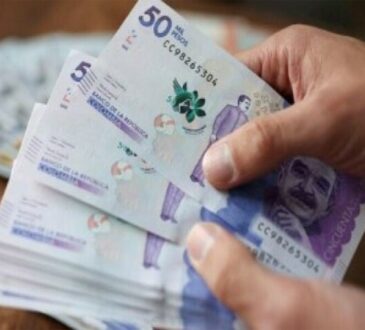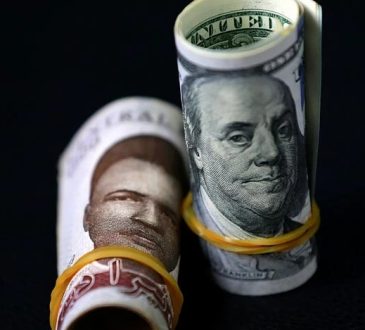
What Was the European Monetary System (EMS)?
The European Monetary System (EMS) was an adjustable exchange rate arrangement set up in 1979 to foster closer monetary policy cooperation between members of the European Community (EC). The European Monetary System (EMS) was later succeeded by the European Economic and Monetary Union (EMU), which established a common currency, the euro.
Key Takeaways
- The European Monetary System (EMS) was an adjustable exchange rate arrangement set up in 1979 to foster closer monetary policy cooperation between members of the European Community (EC).
- The European Monetary System (EMS) was established to stabilize inflation and stop large exchange rate fluctuations between these neighboring nations, with the intended goal of making it easy for them to trade goods with each other.
- The European Monetary System (EMS) was succeeded by the European Economic and Monetary Union (EMU), which established a common currency, the euro.
Understanding the European Monetary System (EMS)
The EMS was created in response to the collapse of the Bretton Woods Agreement. Formed in the aftermath of World War II (WWII), the Bretton Woods Agreement established an adjustable fixed foreign exchange rate to stabilize economies and consolidate global financial power among the Western Allied nations. When it was abandoned in the early 1970s, currencies began to float—fluctuating in market value relative to one another—which prompted members of the EC to seek out a new exchange rate agreement to complement their customs union.
The EMS’s primary objective was to stabilize inflation and stop large exchange rate fluctuations between European countries. This was part of a wider, overall goal of fostering economic and political unity in Europe, which ultimately paved the way for a common currency, the euro.
Currency fluctuations were controlled through an exchange rate mechanism (ERM). The ERM was responsible for pegging national exchange rates, allowing only slight deviations from the European currency unit (ECU)—a composite artificial currency based on a basket of 12 EU member currencies, weighted according to each country’s share of EU output. The ECU served as a reference currency for exchange rate policy and determined exchange rates among the participating countries’ currencies via officially sanctioned accounting methods.
Under the presidency of Jacques Delors, the “Delors Report” was produced that outlined how EMU could be used in place of EMS.
History of the European Monetary System (EMS)
The early years of the EMS were marked by uneven currency values and adjustments that raised the value of stronger currencies and lowered those of weaker ones. After 1986, changes in national interest rates were specifically used to keep all the currencies stable.
A new crisis for the EMS emerged in the early 1990s. Differing economic and political conditions of member countries, notably the reunification of Germany, led to Britain permanently withdrawing from the EMS in 1992. Britain’s withdrawal foreshadowed its later insistence on independence from continental Europe; Britain refused to join the eurozone, along with Sweden and Denmark.
During this time, efforts to form a common currency and cement greater economic alliances were ramped up. In 1993, most EC members signed the Maastricht Treaty, establishing the European Union (EU). One year later, the EU created the European Monetary Institute, which became the European Central Bank (ECB) in 1998. The primary responsibility of the ECB was to institute a single monetary policy and interest rate.
At the end of 1998, the majority of EU nations simultaneously cut their interest rates to promote economic growth and prepare for the implementation of the euro. In January 1999, a unified currency, the euro, was created; the euro is used by most EU member countries. The European Economic and Monetary Union (EMU) was also established, succeeding the EMS as the new name for the common monetary and economic policy organization of the EU.
Criticism of the European Monetary System (EMS)
Under the EMS, exchange rates could only be changed if both member countries and the European Commission were in agreement. This was an unprecedented move that attracted a lot of criticism.
In the aftermath of the global economic crisis of 2008-2009, significant tension between the principles of the EMS and the policies of national governments became evident.
Certain member states—Greece, in particular, but also Ireland, Spain, Portugal, and Cyprus—pursued policies that created high national deficits. This phenomenon was later referred to as the European sovereign debt crisis. These countries could not resort to the devaluation of their currencies and were not allowed to spend to offset unemployment rates.
From the beginning, the European Monetary System (EMS) policy intentionally prohibited bailouts to ailing economies in the eurozone. Despite vocal resistance from EU members with stronger economies, the EMU finally established bailout measures to provide relief to struggling members.
How Was the European Monetary System Established?
The EMS was established through the introduction of the European Currency Unit in 1979. The ECU served as a basket currency, representing a weighted average of member currencies.
What Were the Main Objectives of the EMS?
he primary objectives of the EMS were to achieve exchange rate stability, encourage economic convergence among member states, and create a framework for the eventual formation of the European Economic and Monetary Union. These goals aimed at fostering a more integrated and stable European economic environment.
How Did the EMS Evolve Over Time?
Over time, the EMS underwent several changes. The most significant change was the transition from the EMS to the European Economic and Monetary Union with the introduction of the euro in 1999. This marked a culmination of efforts to establish a single currency for the eurozone.
What Events Led to the Collapse of the EMS?
The collapse of the EMS occurred around 1992 and 1993 when several member states faced currency crises. The crises exposed vulnerabilities in the EMS and prompted a reevaluation of the system.
The Bottom Line
The European Monetary System was established in 1979 as a framework for monetary cooperation among European Union member states. It tried to create exchange rate stability and economic convergence. The EMS played a pivotal role in the transition to the European Economic and Monetary Union, culminating in the introduction of the euro in 1999.




